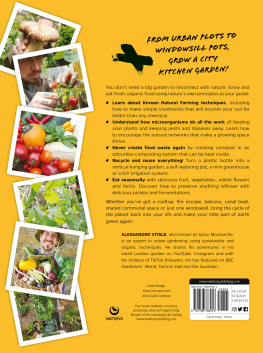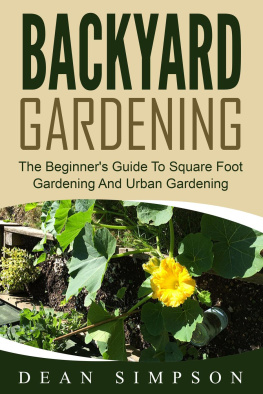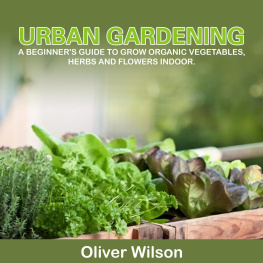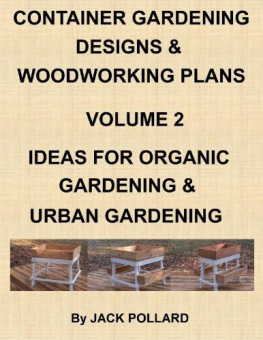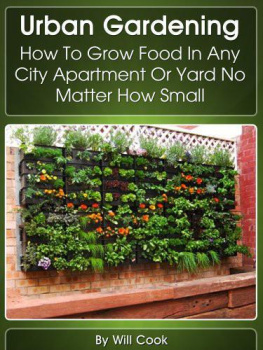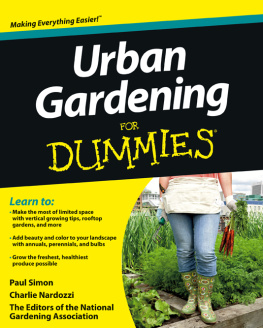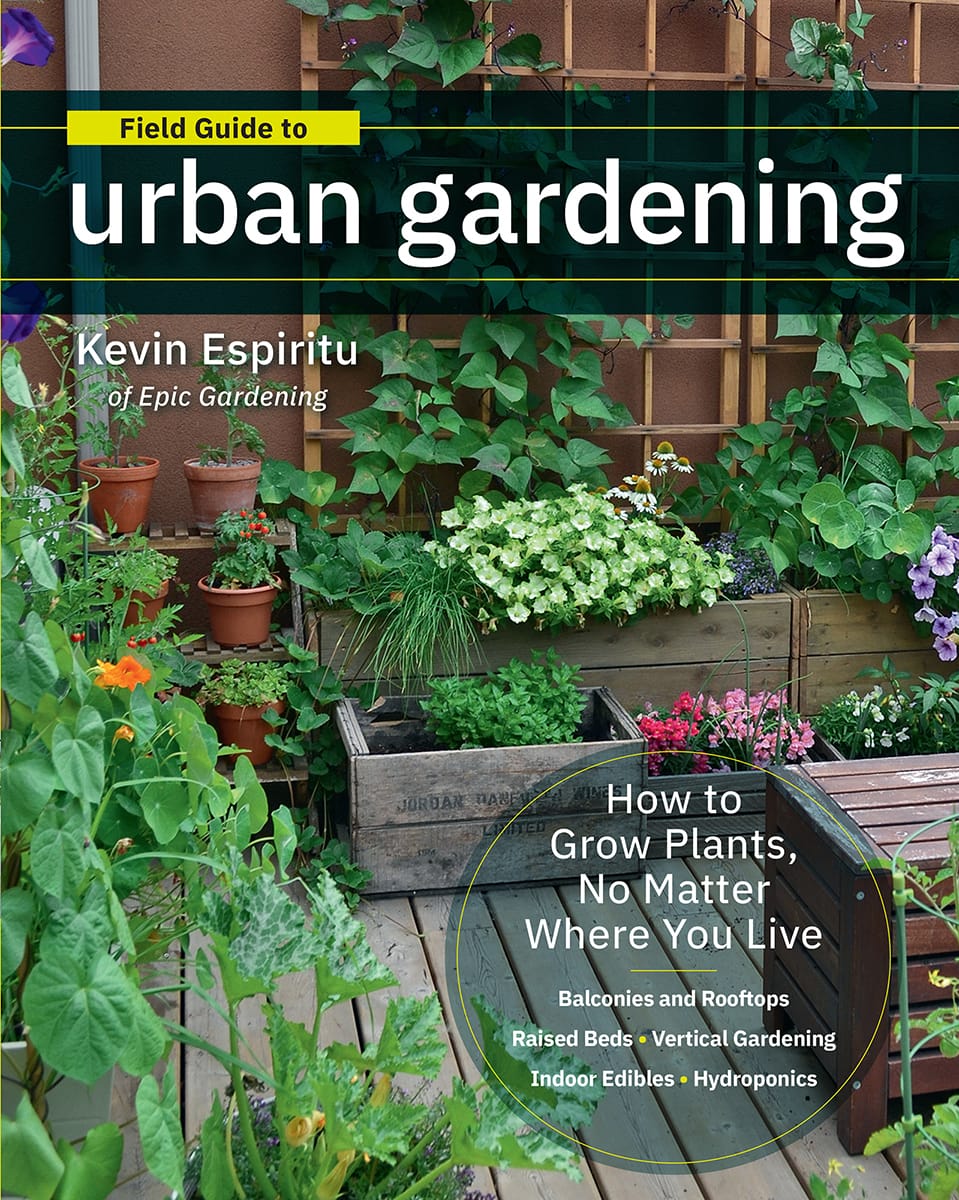I could give a market bag full of grandiose reasons why urban gardening is a wonderful pastime to explore: fresher food, less environmental impact, a more beautiful home. But for me, the real reason is simple its fun.
We live in an increasingly digital and disconnected world. Many of us, myself included, are either behind a computer or a steering wheel for much of the day. Theres not much time left to explore Mother Nature.
The solution? Bring Mother Nature into your home and start growing plants. Not only is it a wonderful way to reconnect with the natural world, but urban gardening (or suburban, exurban, or any other kind of gardening for that matter) can also fundamentally change your life. Youll get these great benefits:

Checking all of the boxes in the super nerd category.
I was a big nerd as a kid. And when I say big, I mean it. I was always pushing the 100th percentile when it came to height and weight. On top of that, I sported a large poufy head of hair and adult-size glasses to match. I wasnt the coolest kid in school. I gravitated toward activities that I could do on my own. I collected coins and rocks, grew crystals, captured bugs, and played a lot of video games. Theres more, but Ill spare you the nerdy details.
One thing I didnt do as a child was grow plants. I dont know why, but gardening never hooked me as a kid. It wasnt until after I graduated from college and settled into my first adult apartment that I even considered gardening. It was my first summer post-graduation. After a whirlwind trip through New Zealand and Australia, a new appreciation for nature sparked within me. That summer, my younger brother came home from college for a few months. Usually, hed hole up in his room and play video games. So I suggested a few alternative things we could do together. I gave him an awesome list of options such as surfing, rock climbing, skateboarding, and gardening.
To my surprise, he picked gardening.
We didnt have much space to grow anything, so we started out by growing basil in containers and cucumbers in a hydroponic system. My brother was in charge of the basil, and I was in charge of the cucumbers. He had the easier job. His basil grew into gigantic, productive plants that were the source of delicious pesto for many months to come. My cucumbers, on the other hand, were bitter, misshapen, and clearly had some nutrient deficiencies. But where my cucumbers failed, the growing experiment succeeded. I had become hooked on growing plants.
I wanted to learn more, so I picked up a job helping Mel Bartholomew. You might recognize his name as the author of All New Square Foot Gardening. While working with Mel and his nonprofit foundation, I soaked up as much of his gardening wisdom as I could. It was an invaluable experience and Ill forever be grateful to Mel for giving me an opportunity to work with him.
In 2015, I started Epic Gardening, a website where I share my journey growing plants. As the years went on, Epic Gardening grew to include an Instagram community, a YouTube channel, and a podcast. It began to take on a life of its own, reaching millions of people around the world in many different countries.
Which brings us to today. Field Guide to Urban Gardening is the culmination of my experiments growing food in small spaces. Over the years Ive grown all manner of plants in small apartments, community garden lots, backyards, front yards, balconies, rooftops, and even closets. Ive experimented with more methods and varieties than I can even recall, and they are all fantastic.

What I hope to accomplish with this book is to describe to you what I have learned and help you decide which methods make sense for you and your situation. Thats why this book is called a field guide. It wont help you identify birds or trees. It is simply a catalog of the many options that offer people like us the chance to have an amazing gardening experience in any environment. I hope that by the time you have taken it all in you will be able to identify the path that works best for you, and that it helps you create your own special relationship with gardening in general, and urban gardening in particular. I am an urban gardener and it has changed my life. I truly hope that soon you will be able to say the same.
Keep Growing,
Kevin
About This Book
The goal of this book is simple: to help demystify the secrets of the green thumb and show you how to get started in urban gardening, no matter what type of living situation youre in.
This book covers the following:
Green Thumb Basics
Theres an unlimited amount of information about how to grow specific fruits and veggies. What Ive done throughout is try to reduce that information into essential knowledge you need to grow a beautiful, productive urban garden.
Urban Growing Methods
The meat of this book consists of in-depth breakdowns of the most practical growing methods for urban spaces, complete with step-by-step projects to get you started growing. These include:
Container Gardening What I call the Lego blocks method. Growing in containers unlocks any living space as a potential growing space, no matter how large or small.
Raised Bed Gardening The tried-and-true method. Raised beds are suitable for most urban environments, as you can make wonderful use of tight spaces to create gardens that are aesthetically pleasing, yet incredibly productive. Learn about raised bed materials, soil mixes, high-density planting, and more.
Vertical Gardening Vertical gardening is less of a stand-alone method and more of a technique to squeeze even more plants into even smaller amounts of space. Learn all about how plants naturally climb, types of trellises, and DIY vertical garden projects.
Indoor Edibles The kitchen garden method. You might think indoor gardening is limited to houseplants, but with a little creativity, you can grow so much produce, even in a small apartment. Learn about using windowsills effectively, indoor herb gardens, and growing microgreens.
Balconies and Rooftops Learn how best to use limited space, how to protect crops from wind and heat, and layering techniques to beautify your home.



